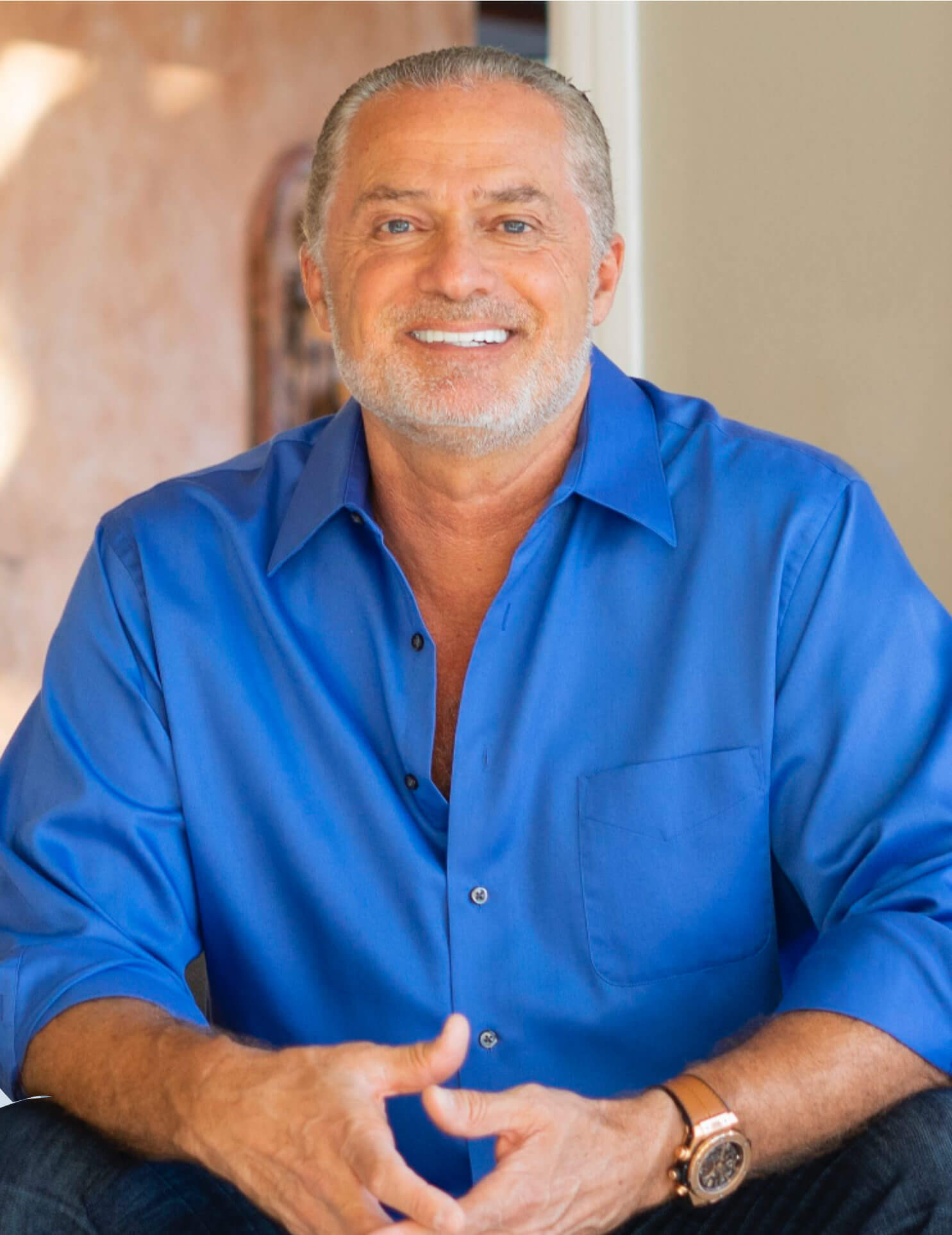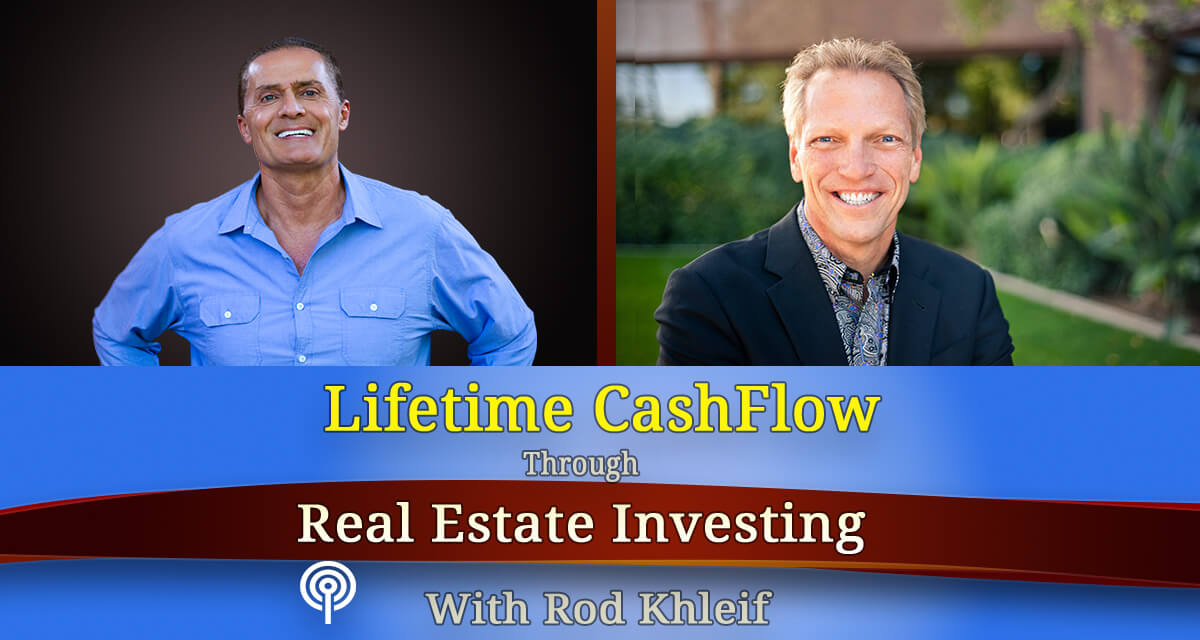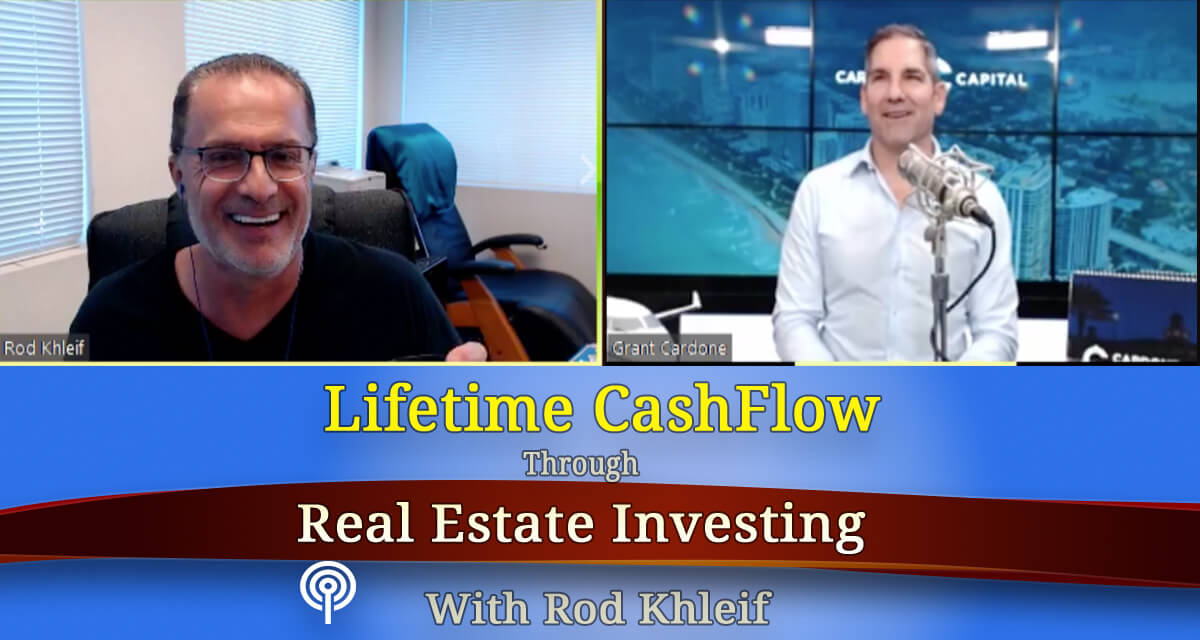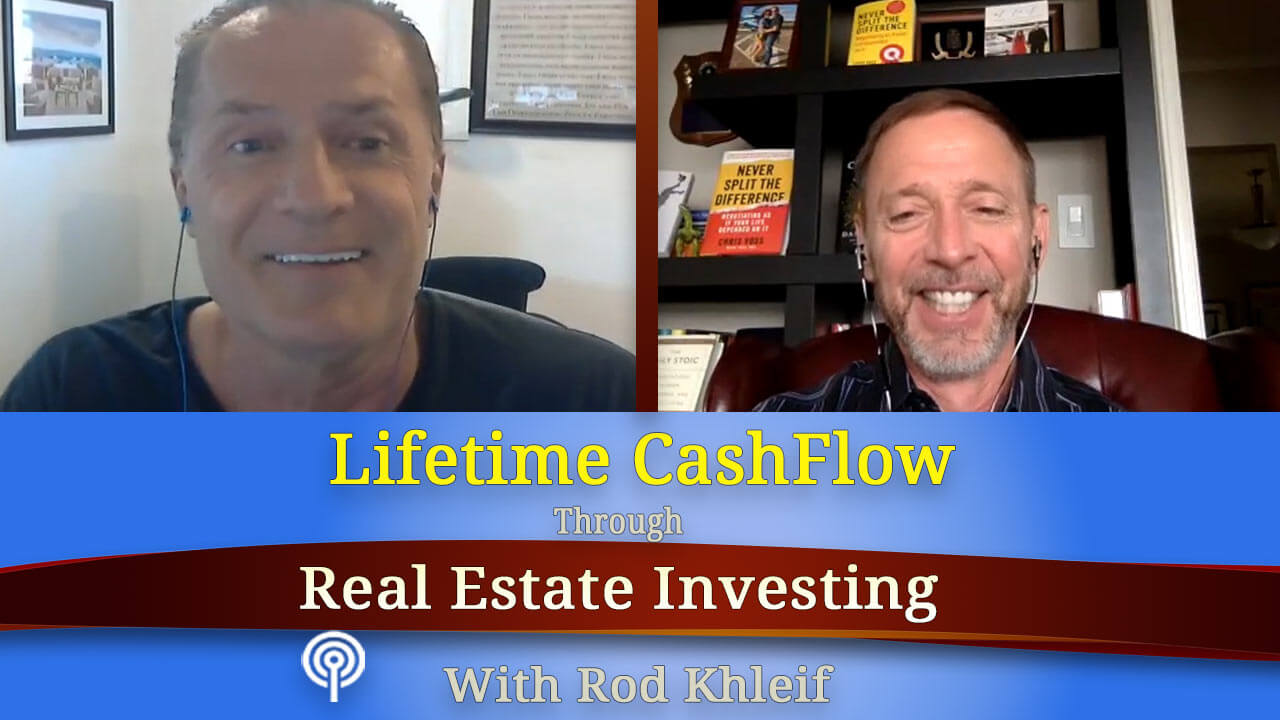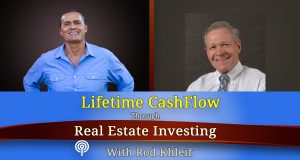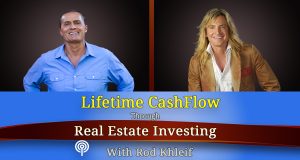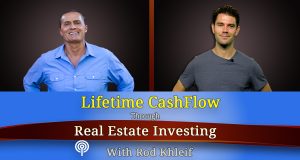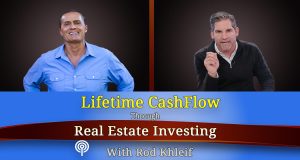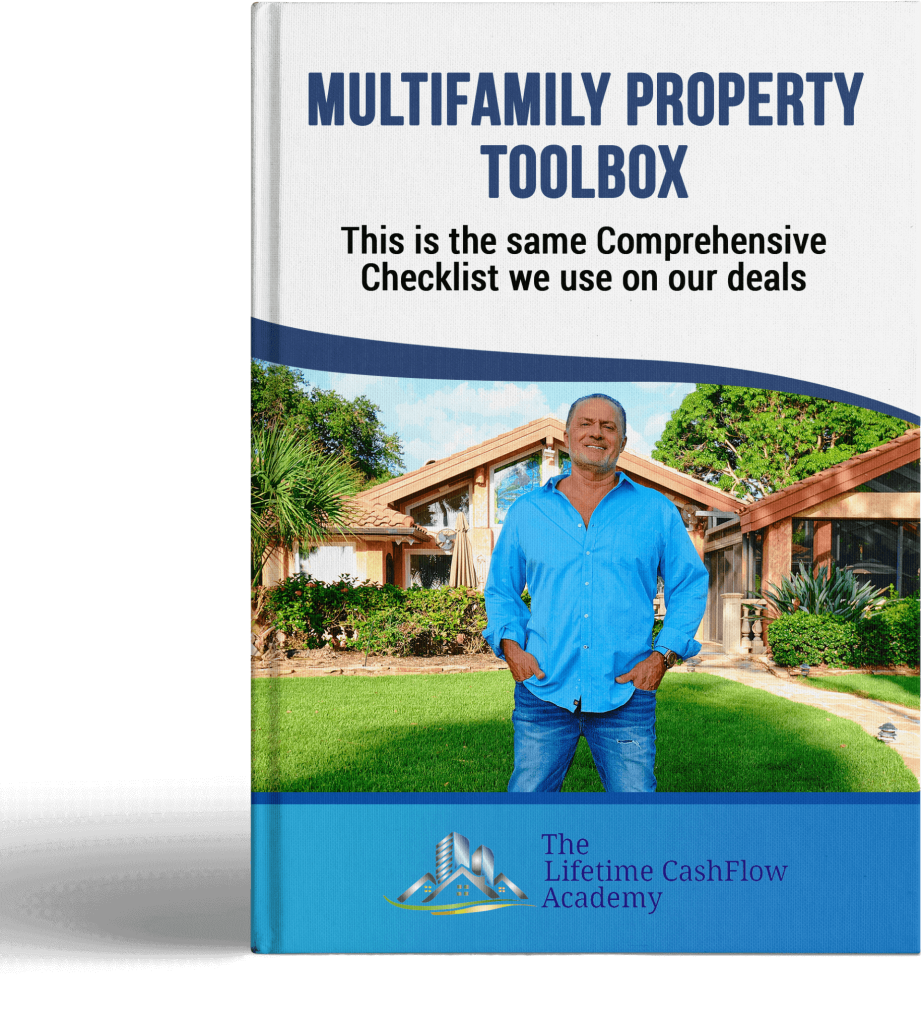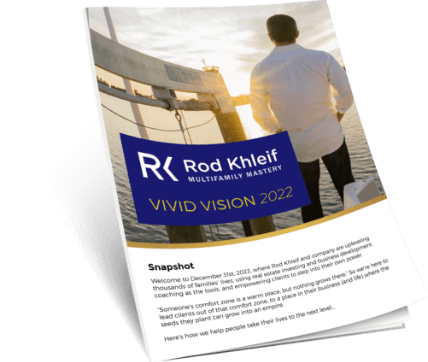Ep #421 – Mike Michalowicz – Author of Profit First
Here is some of what you will learn:
- The flawed formula of profit
- Pay yourself first
- The 5 foundational accounts
- Building your profit muscle
- Avoiding temptation
- Normalizing the flow of cash
To find out more about our guest click here
To find out more about partnering or investing in a multifamily deal: Text Partner to 41411 or email Partner@RodKhleif.com Join us at a Multifamily Bootcamp, visit: MultifamilyBootcamp.com
Watch on YouTube!
Do you want to learn more about Multifamily Real Estate Investing? Work with Rod in the Lifetime CashFlow Academy’s Multifamily Course & Coaching Program
Full Transcript Below:
Ep #411 – Mike Michalowicz – Profit First in Multifamily
Hi, my name is Rod Khleif and I’m the host of “Lifetime Cashflow through Real Estate Investing” Podcast and every week I interview multifamily rockstars. We talk about how they built incredible wealth for themselves and their families through multifamily properties. So hit the like and subscribe button to get notified every Monday when a new episode comes out. Let’s get to it
Rod: Welcome to another edition of How to Build Lifetime Cashflow through Real Estate Investing. I’m Rod Khleif and I’m absolutely thrilled you’re here. Now, I’m super excited about today’s guest and now I got the pleasure of meeting this gentleman at a mastermind that I attended and was so blown away by his presentation. I told my team, we’ve got to get him on the show. His name’s Mike Michalowicz and the reason I was so impressed with him is he’s written numerous books for example Surge, The Pumpkin Plan, Clockwork, and his latest book is called Fix This Next. But the book that I’m most excited about and in full disclosure the only one I’ve read so far is Profit First. In fact, I was so blown away when I saw his presentation that I had my whole finance team buy the book and start reading it. So they’re in the middle of it right now. So anyway Mike’s a really impressive guy. He’s already founded and sold a couple of companies. One to private equity, one to a Fortune 500 companies on his third multi-million dollar company, he’s just a real hitter and I’m super excited to have him on the show. Mike welcome my friend.
Mike: Rod, what an intro man. I’m happy to be here thanks brother.
Rod: Absolutely so you know maybe you can kind of talk about how you discovered the concepts of I mean, the kind of “duh” concepts as far as I’m concerned that’s the best word I can use to describe you know what you talked about in Profit First. Maybe talk about how that manifested and then I’d like to really get into some of the strategies if you don’t mind.
Mike: Perfect yeah the manifestation and there’s four kind of distinct phases that I can share with you. So here’s I discovered it so you were kind of to share that I’ve started and built some companies. They were both in tech space, both were multi-million dollar exits, one was private equity, one was a fortune 500. And one thing that I don’t readily share on my resume is operating those companies they were not profitable. They were, I was struggling, surviving check by check. I was lucky honestly to exit. nd I ultimately discovered that’s the hidden truth for most businesses. There was a SBA, a Small Business Administration conducted in part facilitated a study and identified that a small business is it coming at this twenty five million dollars in revenue or less, 83% of small businesses already checked to check survival, which means 83% of businesses don’t have enough cash flow today and not enough deposits coming in, none of sales, to support the expenses next week or next month. Let alone the owner pay themselves. And so, there’s this constant you know we got bring in money mentality. But what confused me was, how come so many businesses you know I started my companies from financial freedom. So many people started in part for financial freedom and joy. How come we can’t figure that financial freedom? the vast majority of us? And that’s when I concluded that the formula, the foundational formula for profitability which is sales – expenses equals profit is a flawed formula. It makes sense logically you have to have sales you subtract over whatever you spend you subtract out. And what’s left over is your profit. That makes logical sense. The problem is our behavioral use of that. It’s human nature when something comes last Rod means it’s insignificant like I get you know my family I would never, I love my family. I’d never say I put my family last and it you know health, if you’ve had a health scare or concern, I wouldn’t start saying you know I better start putting my health last. What comes first is prioritized behaviorally and what comes last is the perpetual manyana syndrome. It can wait, you can get delayed. We’ve been told that profit comes last. And by the way Rod, it’s so pervasive that it’s in our vernacular. We call profit the bottom line. We call it the year-end. All these things mean last and therefore we treat it that way. So I saw an execution most business owners, myself too, would wait until the end of the year, do our tax returns, say didn’t happen this year, maybe next year. And the panic would ensue. So what the new formula is, when I teach them Profit First, every time we take a sale, we immediately subtract profit. So sales minus profit, it goes expenses. Every time we miss a sale, every time is inbound cashflow, we immediately get predetermined percentage of that hideaways profit and run the business off the remainder. It’s the pay-yourself-first principle applied to business
Rod: Love it and guys, those are you listening that are you know there’s, I know a lot of you already have your own businesses going. If you’re still w-2 and you’re getting into this multifamily space, you are going to put on your entrepreneur hat and start a business. That’s why I wanted Mike on the show because this strategy, I mean I’ve built 24 businesses. Some of you have heard me talk about that several work millions of, tens of millions actually, and several of quite a few have been spectacular flaming seminars. I call them, but the point is this strategy was so I opening for me. I’m disappointed that that I didn’t hear about it a lot sooner. So can you drill down a little bit about the mechanics of how you make it work? because Mike I know you did that when I saw you live and
Mike: Yeah so let’s go through the four phases. So, I’ll start off with phase one. Phase one is the concept, I call it setting up small plates. And I derive this from diet, the study of a healthy diet. And basically what’s happened in our diets is that plate over the last three years, plates use to be the size of like coffee saucers. That was actually a serving plate. Over 300 years, plates have doubled in size. With a doubling in size, our behavior has not changed. So 300 years ago, we would fill up the plate and clean it off. Well today, with double the plate size, we still fill the plate and clean it off. But because the plate size doubled, the servings doubled, the caloric intakes doubled, and as a society, our waist lines doubled. So this instructor I was watching shared a real simple principle. Get smaller plates for your house. It automatically constrains and restricts your consumption. And I was like, oh my gosh, this physical fitness tip translates to fiscal fitness. And the translation is this most business owners do I call bank balance accounting. Most small businesses don’t know, the owners don’t know how to read a cash flow statement a balance sheet and income statement and time in together. They don’t know the metrics. They don’t set KPIs. And I’m not saying it’s a bad thing. I’m just saying that’s a typical thing. Instead of trying to force that down our gullet and that’s the mentality historically. It’s like well you better learn your accounting, you better master it. We actually need to look at our existing behavior and then channel that existing behavior not change ourselves but channel it to the outcome we want. What we do is we set up small plates. Most business owners do what I call bank balance accounting. We log into our bank account see how much money we have. If there’s money there, we can spend it. If there’s no money there, panic ensues. So what we need to do is set multiple accounts in our bank. My teaching Profit First, there is what I call the five foundational accounts. One’s called income, one is called profit, the next one’s owner’s comp, there’s tax, and then there’s opex or operating expenses. And the idea is this, money now, when you deposit money you put into this income account then we carve it up based upon predetermined percentages. We allocate to the different accounts. So now we have a portion that money reserve for profit, we’re talking about that already, a portion reserve to pay ourselves, a salary, which is different in profit. People confuse that. There’s a money reserve for taxes. The biggest bill associated with operating business historically for almost every business is the tax bill yet people are least prepared for that. So the business is gonna reserve that money for us on our behalf. The last account is opex which is the true operating expenses of the business. How this works in practice is say a thousand dollars came in the past, I used to think, most entrepreneurs think a thousand dollars comes in, I have a thousand dollars to run my business. That’s not true. Now, when a thousand dollars comes into an income account, we then carve it up based upon these predetermined percentages. We realize Oh, two hundred bucks is reserve for profit,two or three hundred bucks reserve to pay a salary for me as the most important employee, the owner/operator. Portion of that is reserved for taxes and then the remainder say three hundred four hundred dollars is actually for the operating of the business. We don’t a thousand dollars, we have $400.00
Rod: So let me recap if you don’t mind just of course because you did that really quick and I think people’s heads might be spinning. So what he’s talking about guys is you actually open these individual bank accounts at your bank. One for income, one for profit, one for all your ownership revenue, your salary, or how you pay yourself, then one for your taxes less a Reserve account and then your operating expenses. And so the income, correct me if I’m wrong that income account really is pretty much just a pass-through is it not? It takes the revenue in and then it pretty much empties out yes?
Mike: That’s exactly it. So I call it a serving tray and the analogy I use is Thanksgiving you know when that turkey comes out of the oven, no one says to all the guests hey everyone grab a knife and fork everyone for themselves fight for it you know he carved the turkey and the reason we carved the turkey is to apportion food to every guest at the table. It’s that simple. So the income account is a serving tray. It’s a cash turkey for the entire business and its owner and we then need to carve it up
Rod: Got it got it and so what sorts of you know I remember there were several as in fact a couple of the guys that run the mastermind that you spoke at had already started this process. Some do it with slightly less accounts they might just do three or four the accounts. What sorts of scenarios have you seen and if someone wanted to start this, what might be a less stressful you know
Mike: Yeah okay it’s a great question and we have the data now to back it. So I’m very proud and humbled at the same time to say that over three hundred thousand companies now do this.
Rod: Wow
Mike: We have lots of case study feedback and businesses sadly have failed at it and many business have been successful. Here’s the big differentiator, the successful businesses started slow and they let it grow. What I mean by that instead of setting up these five accounts and in fact in the advanced discipline is prot first you can set you know 10 or even 15 accounts. In the most basic stage we set up just one account and as a profit account and the whole goal is this, keep writing the business the way you’ve always run it but when a deposit comes in, let’s start with a very small percentage, maybe even just 1%, allocate that 1% to our profit and then the next deposit comes and do the same thing because the goal here is not you’re going to get rich overnight. This is not a get-rich-quick but what it does it starts building the discipline. It starts teaching you to take your profit first. And when you see a cache, notice a cache profit, this is not an a accountant you know here’s, you had a fifty thousand dollar profit they circled your income statement and you asked him where it is and like oh you don’t have it you spent. That’s an accounting profit. This is a cash profit and once you see that 1% accumulating then we start getting courage to say well if I try two or three and it starts building and we start adjusting our business to support that profit. So start just one account that’s why I suggest
Rod: Okay okay and then as you know what sorts of hurdles do you see besides you know jumping into this and in being overwhelming your team and yourself likely, what are the sorts of hurdles do you see? Any mental blocks or things that people yeah push through when they start this
Mike: Yes so the biggest thing is going too fast right. So you hit like hitting a gym and you haven’t worked out in in years and you say I’m gonna throw up three hundred pounds on a bench press and you carry on your shoulders. So start slow. Here’s the second thing though is that when you start taking a profit first there’s less money obviously for the operations of the business. Some people will not be able to pay their bills of course. Now, here’s the lesson if you can’t pay your bills that means you can’t afford your bills. Many people sadly I can’t pay your bills and say ah I can’t be profitable, that’s not true. This is your business speaking to you because if you take your profit first, you can’t pay your bills, that’s your business saying you want to achieve a five or ten percent profit what we’re reserving you can’t do it under the current circumstances. You’re paying too much. And there’s only two ways to adjust. One is cut costs. And in our studies we found that almost any business can cut 10% it costs pretty much overnight there’s negligible costs everywhere. Cutting no more than 10% starts getting more difficult but many businesses can come to 20 percent cost. So that’s one quick easy opportunity to increase profitability but the bigger more important opportunity is margin. How do we get more value out of what we’re selling you know how do we dictate a higher price point and a lower cost associated with the acquisition of the raw materials or whatever for that product? So when you can’t pay your bills, you have to cut cost and increased margin. And I think that’s the challenge to people. They can’t pay their bills, the system, and they give up. And that’s a shame because they go back to the way that wasn’t working before
Rod: Well you say increase margin. But really beyond increasing revenue, that’s the only way to increase that margin
Mike: Yeah you know I don’t know the real estate market too well but you know you gotta be really cool on buying low valued properties. When I say low value, properties that are undervalued that you increase the value. So the margin is the acquisition cost in the selling cost and how do you increase that gap
Rod: Okay or the cash flow that you generate passively from that asset
Mike: Passive income exactly
Rod: Okay okay that sounds good. So, if I were to give someone a step-by-step and I’m gonna tell you go get the book guys for sure but on a step by step, they open that first bank account, they put maybe 1-2 percent in just to see how it feels and get that mindset going. Any other thoughts or strategies that we might be able to share with my listeners that they could plan to encounter. And then after they get that mindset around that first account you know what might be the progression? And how could they you know continue that implementation?
Mike: Yeah so that moves kind of the second phase
Rod: Okay that was Phase one. Got it.
Mike: Yeah that was Phase one. So Phase two is exactly what you’re asking about. Phase two is that the owner of the business, at least initially should actually manage the transfer of money. It’s very easy to outsource and say I have a bookkeeper or something do this. The thing is, there is a visceral behavioral response when you allocate money toward profit these other accounts. It feels good, actually results in a dopamine response. It’s called a reward mechanism. So when you transfer that 1% into profit and you see you know even a few hundred dollars it’s like, hey there’s cash piling up for me. As you set these other accounts, they are in sequence for a certain reason. The income account comes first because it’s a serving tray to your earlier point. Then the profit account because that’s rewarding the shareholder, the business, the owner. The next account is the salary of the owner. So you’re gonna next fund that account. It’s another dopamine release right, hey. Then you will fund the tax account which of course is not a reward. It’ll gonna be used to pay your taxes but does protect. So now you’ve rewarded, rewarded, now you protected yourself meaning the money’s been reserved your taxes and the last account services the business. So it has a behavioral mechanism of reward, reward, protect, and serve. Reward, reward, protect, and serve. And it actually starts building this profit muscle
Rod: Okay okay and guys I know some of you are thinking. Hey, I can just eliminate that tax account because we have all the incredible write-offs in the real estate business. And I’m going to tell you that would be a mistake. Yes we have cost segregation and all these things and many of us don’t pay taxes but I would still fill that account and if you don’t need it at the end of the year, that’s just gravy that’s great roll into profit but I would still fund that account. Okay so is that Phase two then?
Mike: Yeah that’s Phase two. And Phase three is to address temptation and here’s what I mean by temptation. Temptation often we try to use willpower to prevent that, to use something that we shouldn’t use. So like, I’m trying to be on a special diet cause I’m preparing for an athletic event and my coach said no bad carb that’s why I just finished a banana right now right.
Rod: I had a shake right here
Mike: That’s beautiful. He said no cookies, no cookies and I love cookies. So I said, well what do I do? He said, well there’s a real simple solution, have no cookies in the house because when it’s not accessible. You won’t consume it. That’s what we need to do with these this cash. As we allocate it to a profit, that’s a reserve for distribution in the future. Usually every 90 days. So yeah I’ll keep mine toward owners comp. That’s right your salary. So don’t worry about that. But the profit starts accumulating and also the taxes because that’s when we reserve to pay our tax bill when, and if they should come and if not, that’s gravy. We need to prevent ourselves from borrowing from those accounts. It’s very easy to say, well that money’s sitting there. Let me just use that and then we unwind the system. So, the next step is to actually find another bank or some way of hiding that money from yourself. It’s another mechanism called hold accounts where you can use this, do this. But basically you transfer the profit out of sight out of mind to another bank. No ATM card you know no starter checks, no online banking. And now when the money is very hard to get, and my money is literally at a second bank, I have to drive three hours to get there. It’s a small local bank and I have to get a banker’s check. It’s a pain in the butt to get so I don’t steal for myself. So, we want to remove the temptation for the profit account and remove the temptation to steal from the tax account and let that money pile up out of sight out of mind
Rod: Yeah and I know some of you analytical guys are going well I mean you know that just seems like you know mental you know mental, you know I don’t know what… yeah yeah yeah and and and but, that’s really what it takes to be disciplined. I mean I can totally relate to you know having money in a separate account and then like crap, I’ve got to go use it. And if it’s difficult to get to, I can totally see the benefit of that. So that’s Phase three is to make it difficult to steal back from yourself or quote-unquote I saw you do the quote marks “borrow it back” because you know
Mike: And it’s fine you saw it because we use soft terms like that we would never say steal from ourselves
Rod: Right
Mike: We would never say I’m destroying the system. We say, oh I’m leveraging, I’m borrowing. Those are all soft terms for stealing from ourselves.
Rod: Right right right. People say I’m stressed. They’re just fearful. Same thing you know you see softeners to, so we don’t get disgusted. So what’s Phase four?
Mike: Phase 4, the final phase, is to get into a rhythm. And the rhythm going back to the diet industry, they found that most of you eat three meals a day. But we go into this peak hunger state, if we went three meals a day, there’s a certain point I’m starving. I can’t wait til lunch is served. And then we eat, overeat, we go into a gluttonous state. So what we need to do is, they said, the optimal meal frequency is actually five meals a day. Have actually a shake like you’re doing it’s the perfect meal frequency. What happens is, you get continuous stream of nutrients but also it mitigates that peak hunger state because you’re always say shaded. You’re always fed. Well in in business, most businesses particularly the real estate industry as far as I understand we go into this peak state where you have some big transactions and tons of money floating or like we are on top
Rod: Sure, sell an asset and have a bunch of money come in you bet
Mike: And then, we go into the glutton state where we spend all that money and now we have nothing and panic ensues. And we’re starving for money. So it’s very volatile and it and we react reactionary that’s dangerous. So we need to have some way of mitigating this and one strategy specifically to real estate is to set what’s called a drip. And a drip is as money flows into the income account, that money has a responsibility not just for the moment but two covers for a certain period of time you know if you’re doing big transactions, let me just say once every six months for easy numbers sake and say a big chunk of money comes in, well that money need to be carved out six times one per month six slices so it drips back into the business and normalizes the flow of cash. So if sixty thousand dollars of cash comes in, now instead of saying, hey I make sixty thousand, we put it in this account called drip, and every month we take one tenth of that, I’m sorry one sixth of that, so ten thousand every month goes into the income account so it can cover us for that period of time. That’s how we get into that kind of regular diet and stay satiated
Rod: Got it. Got it. So you know again because I’m not an expert at this yet. I was struggling to come up with AI preparing for this meeting with additional questions. Can you you know, what else you know haven’t we covered in this process that might pop up for people or that might be you know a way to push them over the edge to implement this system? Yeah so one common question is, one common need I should say is accountability. So I’ll share a little story around how important this is in a little context. So I’ve been doing this for myself now for 12 years. I’ve been doing it the right way for 11 years. So I’ve had 43 consecutive quarters of profit distributions and as I approach my 11th year but the first year was a train wreck. Here’s what happened, money came in, I put my entire profit and then panic ensued I borrowed from the profit account, stole from myself, and unwind the system. And I was just, it really became a shell game. And this is not, you know a proper nice shell game, it is a behavioral system, it captures our normal behavior in channels it’s the outcome we want. Well what I found was missing was accountability. And accountability was specifically that I teamed up with another person another entrepreneur and said listen I’m doing profit first system. I want to make sure that I never steal my profit that I’m always focused on that. And I said we can talk about it but that’s really not really accountability what actions could be put in place. And one technique what we use, his name was Larry, we put dual signatures on my check. So when I want to try
Rod: In the profit account?
Mike: Right in the profit account
Rod: So you had to get his signature to get money out of there got it
Mike: Yeah yeah he honestly bribed, he was a little bit of a dick. Like he was a pain in the ass about me taking the money out. Well we went to Ireland, my wife and I on our profit. Profits always used to celebrate. I always used to reward shareholders. I’ll talk about that in a second. But I went to Ireland and I called Larry said hey Larry can you, I want to issue my private check. It’s time, its distribution time. Can you sign it? He said yeah no problem come down. So, I went down there, this is now, listen, I’ve been doing this now you know for eight years or nine years in and he goes, you’re not gonna reinvest that in the business which is a soft term for making expense. No no no say okay, show me your reservations and bookings like he made me go through all these and after he saw it, that sounds amazing and he signed the check and gave it to me. That’s the accountability that we need to have. You know we can lie to ourselves pretty easily and manipulate and justify. But when someone else is the signatory, oh and of course I was a signature on his checks so here the same degree of accountability. The more strict he was with me, the more strict I’m gonna be with him it’s kinda like it’s kind of like you know workout partners like when your partner’s pushing you like you’re gonna be pushing him. So that was very successful.
Rod: Yes so guys, guys, those are you listening, what’s so exciting about this is, and me personally I’ve been doing it backwards and what this does, when you take that profit first and you pay yourself first then you’re forced to make adjustments and improvements by necessity to make sure that you ensure that you continually able to take profit. We’re not in this business for you know unless you’re doing it as a non-profit you know altruistically we’re not in this business is non profits we’re here to make money and this is such, and guys, those of you are thinking you know this may not may not seem that important to you, trust me. Having built 24 businesses, this is freaking critical and that’s why I wanted to get Mike on the show. Get his book, get Profit First. I’m sure his fix this next book is also awesome. I mean his books have been translated into 20 languages. So he’s doing something right so you know you guys know I rarely endorse anything. So definitely want to get Profit First and Mike, thanks so much for being on the show brother. I really appreciate your energy and your wisdom.
Mike: It was a joy being with you brother. I appreciate it
Rod: Thank you man. Take care.


